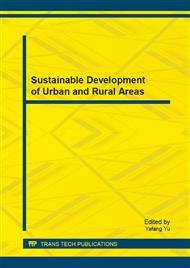p.855
p.859
p.864
p.869
p.874
p.880
p.884
p.888
p.892
Study on Ecological Moral Responsibilities of Sustainable Development Based on Chinas Ancient Great Thinkers Thought on Ecological Ethics
Abstract:
The nuclear contents of the ecological thought of ethics are harmonious development between man and nature, which is the basic demand for constructing the harmonious society. The Confucianists have all along attached great importance to the relations between man and nature. Tsunzi, a master on the Confucianism, made the conception of sustainable development penetrate into his ecological ethics thoughts on the basis of philosophical thinking of distinction between heaven and man. He not only put forward the consciousness of ethics practice-Adapting the law of heaven and making use of it.; but also advocate ecological moral responsibility-Prudently observing the ban on seasonal rules of nature.There will be some significant enlightening value for us to not only establish the theory of environmental ethics but also solve the increasing ecological crises facing humanity.
Info:
Periodical:
Pages:
880-883
Citation:
Online since:
January 2014
Authors:
Price:
Сopyright:
© 2014 Trans Tech Publications Ltd. All Rights Reserved
Share:
Citation:


